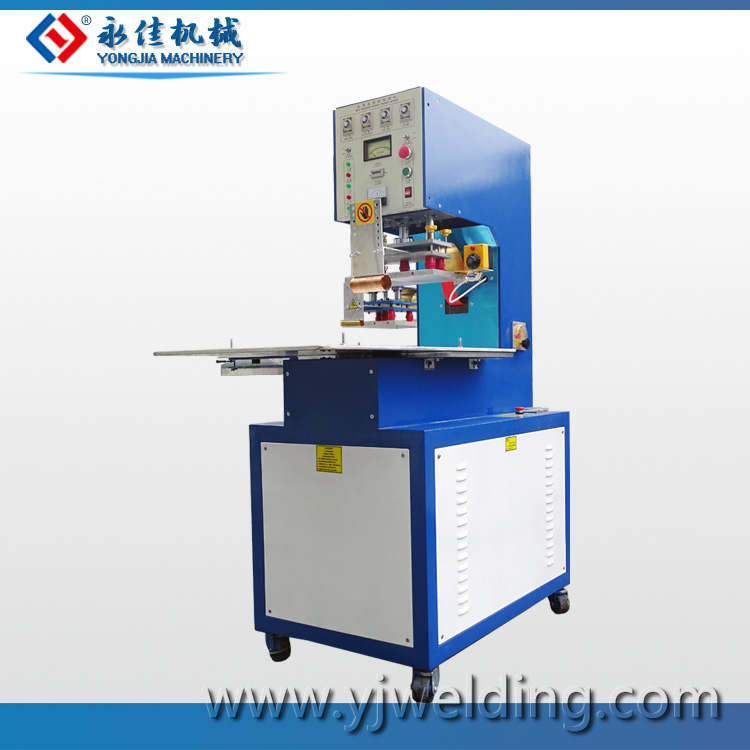What Is High Frequency Welding?
High frequency (HF) welding is the joining of material by supplying HF energy in the form of an electromagnetic field (27.12 MHz) and pressure to the material surfaces to be joined. A generator produces the energy. The tool used to supply the energy is called an electrode. The electrical energy causes the molecules within the material to start moving, which generates heat that causes the material to soften and thereby fuse together. No outside heat is applied. It is instead generated within the material. After cooling the welded surface under maintained pressure, the material is fused and a weld has been created. The weld seam can be at least as strong as the surrounding material – or even stronger.

Four important factors that affect the final weld result are pressure, welding effect, welding time and cooling time. These parameters can be adjusted and combined in different ways to achieve the optimal welding result for a specific material.
The material most commonly used with HF welding is PVC (polyvinyl chloride), sometimes called vinyl and PU (Polyurethane). The material can be thick or thin, reinforced or coated. It can also be plain, coloured or patterned.
Yongjia customers manufacture a great variety of end products in these materials, such as truck and boat covers, tarps, tents, structures, pool liners, sunshades, billboards, inflatable products, liquid tanks, film screens, waterbeds, stetch ceilings, valve membranes and oil booms.
- Suitable materials for high-frequency welding
- Shipments for High Frequency Welding and Cutting Machine
- Shipments for Automatic Rotary High Frequency Blister Packaging Machine
- High Frequency Plastic Welding Machine is Your Best Choice for Welding of PVC Products
- What Is High Frequency Welding?
- The Application Scope of the Single Slide High Frequency Machine







